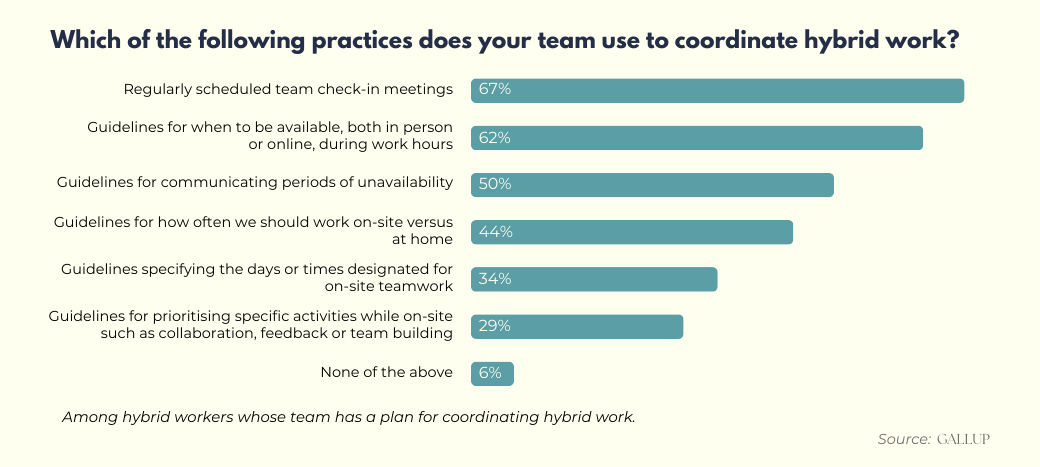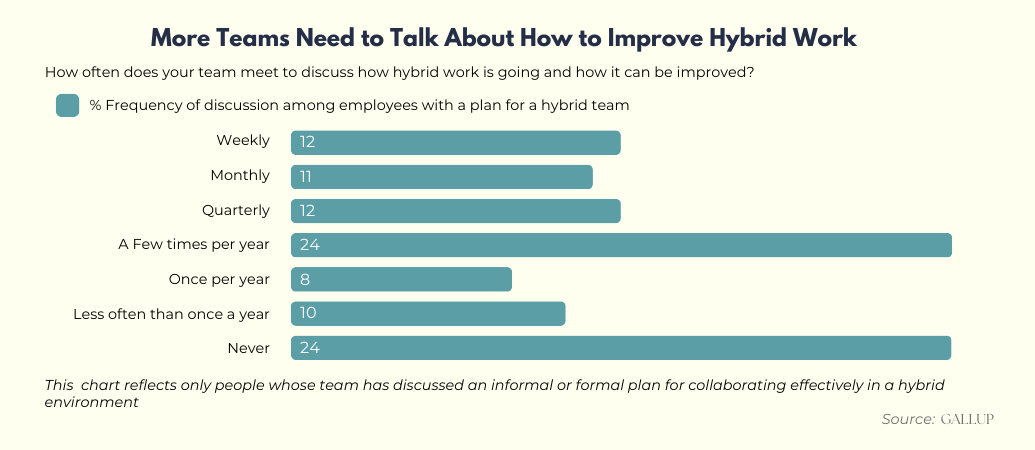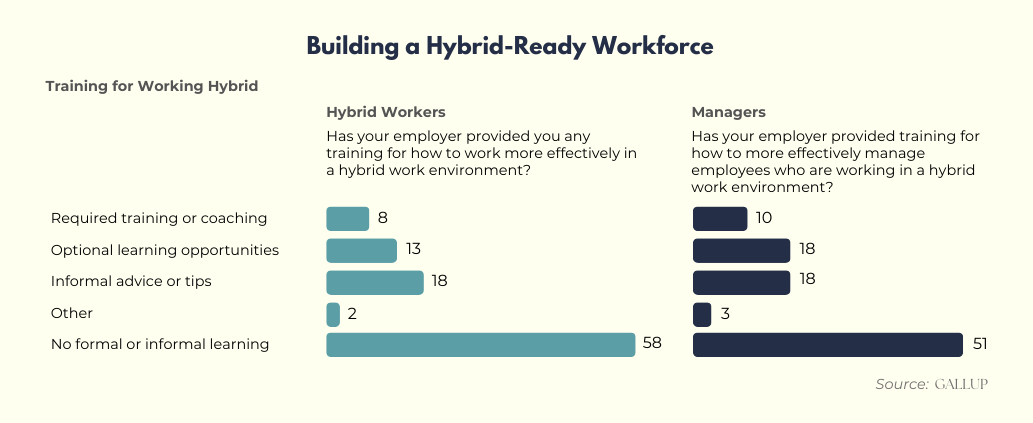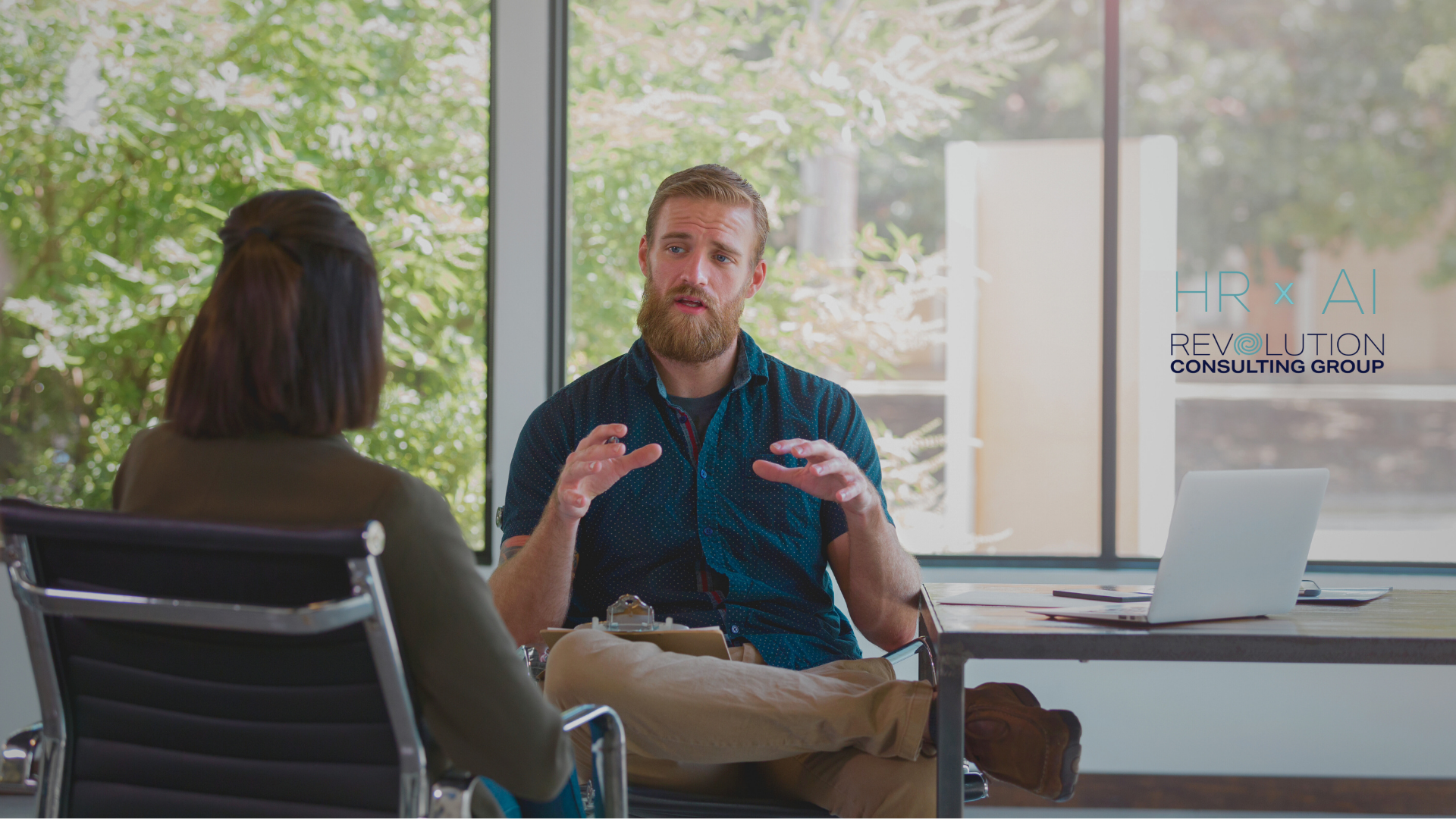Elevating Productivity in Hybrid Teams: Strategies for Success
Introduction
The rise of hybrid work has introduced a new set of challenges and opportunities for organisations. While the flexibility of hybrid work offers individual perks, such as improved work-life balance, it also poses significant hurdles for team productivity. The key to overcoming these challenges lies in how effectively teams collaborate in a hybrid environment. Drawing on Gallup’s latest research, we can pinpoint actionable strategies to ensure your hybrid team not only survives but thrives.
1. Building a Foundation: The Importance of Planning
One of the most startling insights from Gallup’s study is that nearly half of hybrid workers (48%) are on teams that lack a formal or informal plan for effective collaboration. Without a plan, hybrid teams are often left to navigate the complexities of remote work independently, leading to misaligned priorities and inconsistent teamwork.
To address this, organisations need to go beyond mere hybrid work policies. While it's crucial to define when employees can work from home, a plan that outlines how team members will collaborate is vital. This plan should cover the team’s mission, goals, strengths, and specific ways of working together. When hybrid teams have a clear plan, the results are significant: increased collaboration, higher engagement, and reduced burnout.
Takeaway for Leaders: Ensure your hybrid teams have a well-defined plan for collaboration. This plan should be regularly reviewed and adapted as necessary to align with team dynamics and organisational goals.
2. Effective Coordination: Enhancing Hybrid Collaboration
Gallup’s research reveals that regular team check-ins are a top practice among hybrid teams with a collaboration plan. However, it’s not just about meeting regularly—it's about making those meetings count. Discussions should include not only current projects but also broader topics such as availability, communication norms, and on-site work priorities.
One of the most underutilised practices is setting guidelines for prioritising specific activities during on-site days. This is a missed opportunity, as focusing on collaboration, feedback, and team-building during these times can significantly enhance team cohesion and productivity.
Takeaway for Leaders: Make regular team check-ins meaningful by discussing availability, communication, and on-site priorities. Encourage your team to use on-site days for activities that benefit most from in-person interaction.

3. Continuous Improvement: Reflecting and Adapting
A plan is only as good as its implementation. Regular reflection and adaptation are crucial for hybrid teams to stay on track. Gallup found that teams who frequently discuss and refine their hybrid work practices see substantial improvements in collaboration and engagement. Conversely, teams that only address hybrid work once a year or less often struggle with alignment and effectiveness.
Frequent discussions about hybrid work help teams adjust to new challenges and ensure that their work habits support overall team productivity, rather than just individual preferences.
Takeaway for Leaders: Schedule regular check-ins specifically to reflect on and improve hybrid work practices. This ongoing dialogue is essential for maintaining high levels of collaboration and engagement.

4. Upskilling for Success: Empowering Leaders and Teams
Perhaps the most concerning finding from Gallup’s research is the lack of training for hybrid work. Only 21% of hybrid workers and 28% of hybrid managers have received training on how to succeed in a hybrid environment. This gap in training leaves many teams without the tools they need to collaborate effectively.
Organisations must invest in upskilling both their employees and their leaders. Managers, in particular, play a critical role in guiding their teams through the complexities of hybrid work. By equipping managers with the skills to lead hybrid teams, organisations can significantly boost engagement and productivity.
Takeaway for Leaders: Prioritise training for both employees and managers on hybrid work practices. Effective leadership in a hybrid environment is key to sustaining team productivity and well-being.

Final Thoughts: Re-Imagining Hybrid Work
Hybrid teams have the potential to be some of the most high-performing teams in today’s workforce, but only if they receive the right support. Gallup’s research underscores the importance of structured planning, effective coordination, regular reflection, and continuous upskilling.
Leaders must take an active role in shaping how their hybrid teams operate. The future of team productivity depends on it.
Need more help with your recruitment?
Here are the ways we can help you:
- Click here to book a FREE 30 minute consultation to discuss how to get more out of your hybrid working arrangements.
- Click here to join our mailing list to get more tips, advice and updates on all things related to your people practices.
- Click here to book a HR Health Check to ensure your People practices are efficient, effective and compliant.







READY TO GET THINGS DONE?
Revolution Consulting Group is your Dedicated HR Partner




